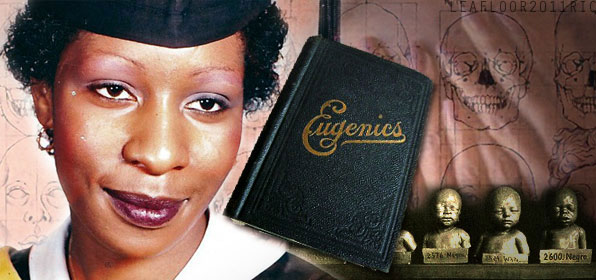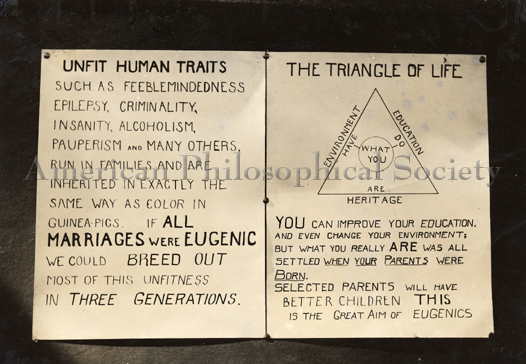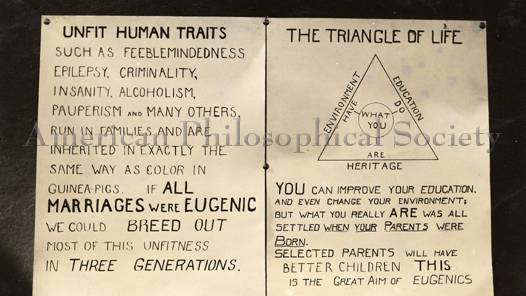Outrageous North Carolina sterilization program targeted women, young girls, and blacks
Source: rockcenter.msnbc.msn.com

Elaine Riddick was 13 years old when she got pregnant after being raped by a neighbor in Winfall, N.C., in 1967. The state ordered that immediately after giving birth, she should be sterilized. Doctors cut and tied off her fallopian tubes.
“I have to carry these scars with me. I have to live with this for the rest of my life,” she said.
Riddick was never told what was happening. “Got to the hospital and they put me in a room and that’s all I remember, that’s all I remember,” she said. “When I woke up, I woke up with bandages on my stomach.”
Riddick’s records reveal that a five-person state eugenics board in Raleigh had approved a recommendation that she be sterilized. The records label Riddick as “feebleminded” and “promiscuous.” They said her schoolwork was poor and that she “does not get along well with others.”
“I was raped by a perpetrator [who was never charged] and then I was raped by the state of North Carolina. They took something from me both times,” she said. “The state of North Carolina, they took something so dearly from me, something that was God given.”
It wouldn’t be until Riddick was 19, married and wanting more children, that she’d learn she was incapable of having any more babies. A doctor in New York where she was living at the time told her that she’d been sterilized.
“Butchered. The doctor used that word… I didn’t understand what she meant when she said I had been butchered,” Riddick said.
North Carolina was one of 31 states to have a government run eugenics program. By the 1960s, tens of thousands of Americans were sterilized as a result of these programs.
Eugenics was a scientific theory that grew in popularity during the 1920s. Eugenicists believed that poverty, promiscuity and alcoholism were traits that were inherited. To eliminate those society ills and improve society’s gene pool, proponents of the theory argued that those that exhibited the traits should be sterilized. Some of America’s wealthiest citizens of the time were eugenicists including Dr. Clarence Gamble of the Procter and Gamble fortune and James Hanes of the hosiery company. Hanes helped found the Human Betterment League which promoted the cause of eugenicists.

Photograph of Kansas State Fair, 1929. Eugenics Society Records.
It began as a way to control welfare spending on poor white women and men, but over time, North Carolina shifted focus, targeting more women and more blacks than whites. A third of the sterilizations performed in North Carolina were done on girls under the age of 18. Some were as young as nine years old.
For the past eight years, North Carolina lawmakers have been working to find a way to compensate those involuntarily sterilized in the state between 1929 and 1974. During that time period, 7,600 people were sterilized in North Carolina. Of those who were sterilized, 85 percent of the victims were female and 40 percent were non-white.
“You can’t rewind a watch or rewrite history. You just have to go forward and that’s what we’re trying to do in North Carolina,” said Governor Beverly Perdue in an exclusive interview with NBC News.
While North Carolina’s eugenics board was disbanded in 1977, the law allowing involuntary sterilization wasn’t officially repealed until 2003. In 2002, the state issued an apology to those who had been sterilized, but the victims have yet to receive any financial compensation, medical care or counseling from the state. Since 2003, three task forces have been created to determine a way to compensate the victims. Officials estimate that as many as 2,000 victims are still alive.
[...]
Visit msnbc.com for breaking news, world news, and news about the economy
Read the full article at: msnbc.msn.com
Visit msnbc.com for breaking news, world news, and news about the economy
Eugenics Board of North Carolina
"Under a 1973 law, the Eugenics Board was transformed into the Eugenics Commission. Members of the commission were appointed by the governor and included the director of the Division of Social and Rehabilitative Services of the DHR, the director of Health Services, the chief medical officer of a state institution for the feeble-minded or insane, the chief medical officer of the DHR in the area of mental health services, and the state attorney general. In 1974 the legislature transferred to the judicial system the responsibility for any sterilization proceedings against persons suffering from mental illness or mental retardation.
The Eugenics Commission was formally abolished by the legislature in 1977.
The board sterilized about 7,600 people, many of them against their will, between 1929 and 1974, in an attempt to remove mental illness and "social misbehaviour" from the gene pool. Among the victims were 2000 young people, some as young as ten years old."
Raped by a criminal, sterilised by the state against her will at 13: Woman ’butchered’ by US doctors
Also tune into:
James Corbett - Geopolitics, Eugenics & Depopulation
James Corbett - Transhumanism, Neofeudalism & the Green Movement
Aaron Franz - The Age of Transitions
Brent Jessop - Club of Rome, Climate, UNESCO & Eugenics
Michael Tsarion - The Post Human World
Rauni-Leena Luukanen-Kilde - Depopulation, Mind Control & Out-Of-Body Experiences
Aaron Franz - The Philosophical Roots of Transhumanism
Aaron Franz - Technological Revolution, Hope & Dystopia






















